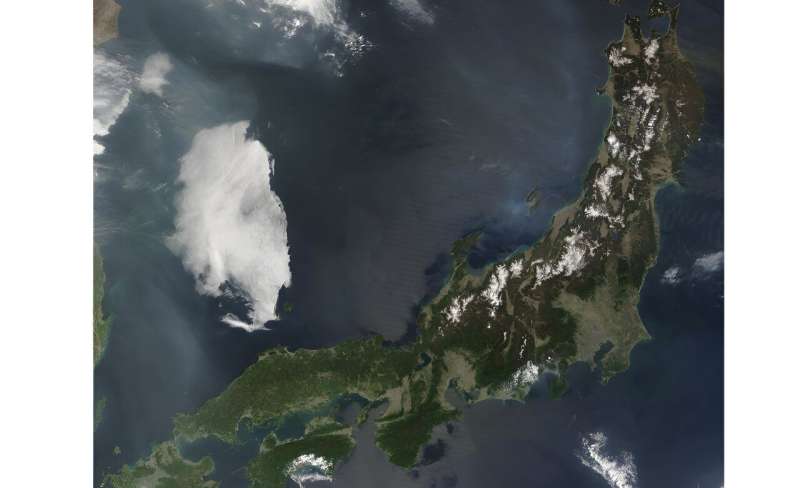This article has been reviewed according to Science X's editorial process and policies. Editors have highlighted the following attributes while ensuring the content's credibility:
fact-checked
proofread
Plate boundaries may experience higher temperature and stress than previously thought

Temperature and shear stress are two influential variables that affect faulting and seismicity in subduction zones, where tectonic plates converge. Yet because earthquakes originate tens of kilometers below Earth's surface at plate boundaries, the effects of temperature and the magnitude of stress are poorly understood and hotly debated.
Philip England and colleagues explored these variables at the plate boundary in northern Honshu, Japan's largest island and the setting of the devastating Tōhoku earthquake in 2011—the most powerful ever recorded in Japan. The authors used a dense set of heat flux measurements collected from 100-meter-deep boreholes as a proxy for measurements at the inaccessible plate interface.
The findings are published in the journal Geochemistry, Geophysics, Geosystems.
Their mathematical analysis found that the temperature at a depth of 60 kilometers at the plate boundary is around 660°C, while shear stress is approximately 100 megapascals. Both figures, especially the temperature estimates, have a degree of uncertainty due to the difficulty of determining the contribution of radiogenic heat. But both are notably higher than past estimates, which were generally lower than about 400°C and a few tens of megapascals, respectively.
However, the results align with a heat flux analysis completed at the Kermadec subduction zone, the only other location where shear stress was estimated using a comparable density of surface measurements, where uncertainty due to the influence of radioactivity is substantially lower.
The results improve the understanding of the conditions surrounding earthquakes at the northern Honshu plate boundary. In addition, they explain the temperature and pressure observed in rocks of the Sanbagawa belt in southwestern Japan, an unearthed vestige of a 90-million-year-old plate interface.
As the authors note, the agreement of the results with conditions on the present-day interface supports the argument that relic plate boundaries like the Sanbagawa record physical and chemical conditions pertinent to earthquake formation in contemporary subduction zones.
More information: Philip England et al, Implications of Surface Heat Flux for Shear Stress and Temperature on the Plate Interface Beneath Northern Honshu, Geochemistry, Geophysics, Geosystems (2024). DOI: 10.1029/2023GC011285
Provided by Eos
This story is republished courtesy of Eos, hosted by the American Geophysical Union. Read the original story here.




















